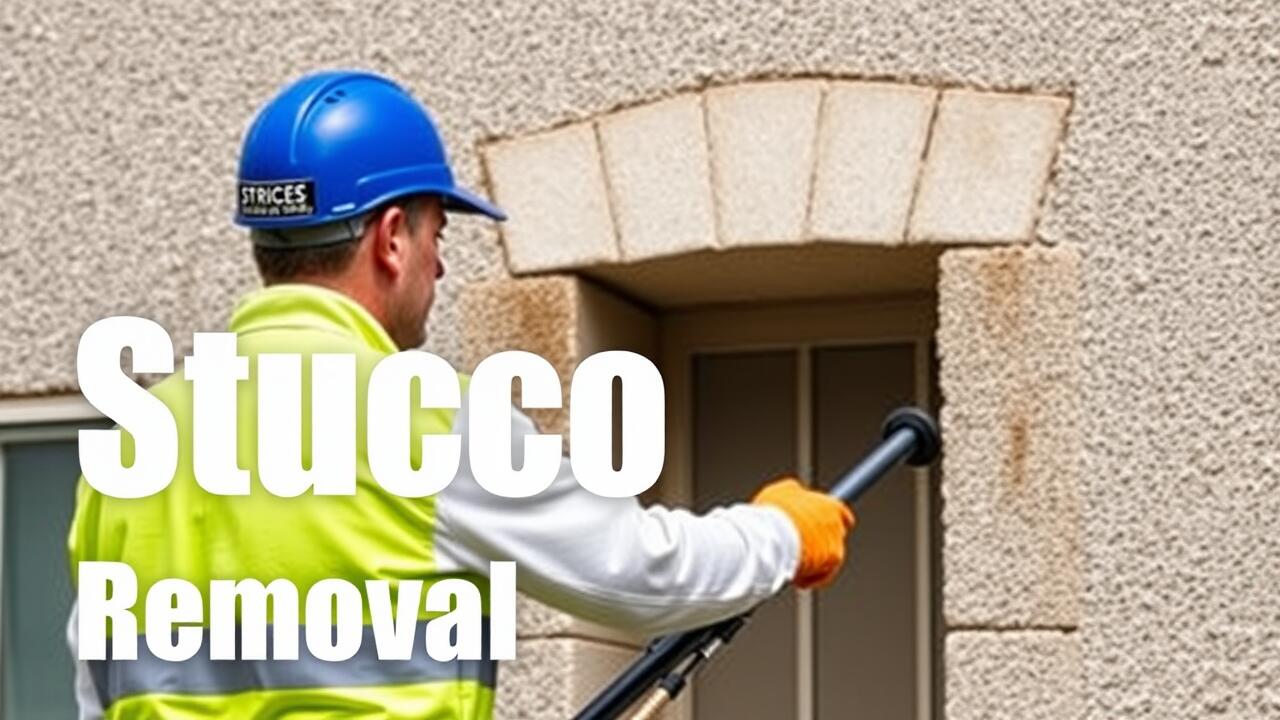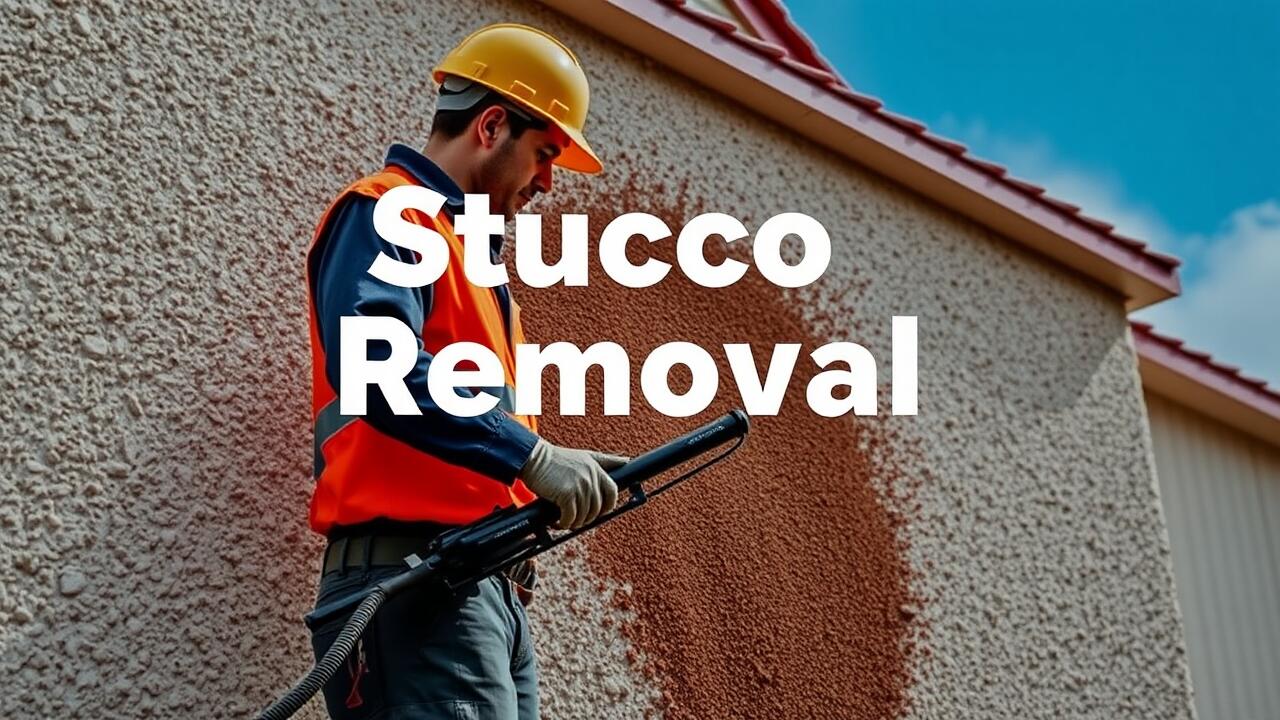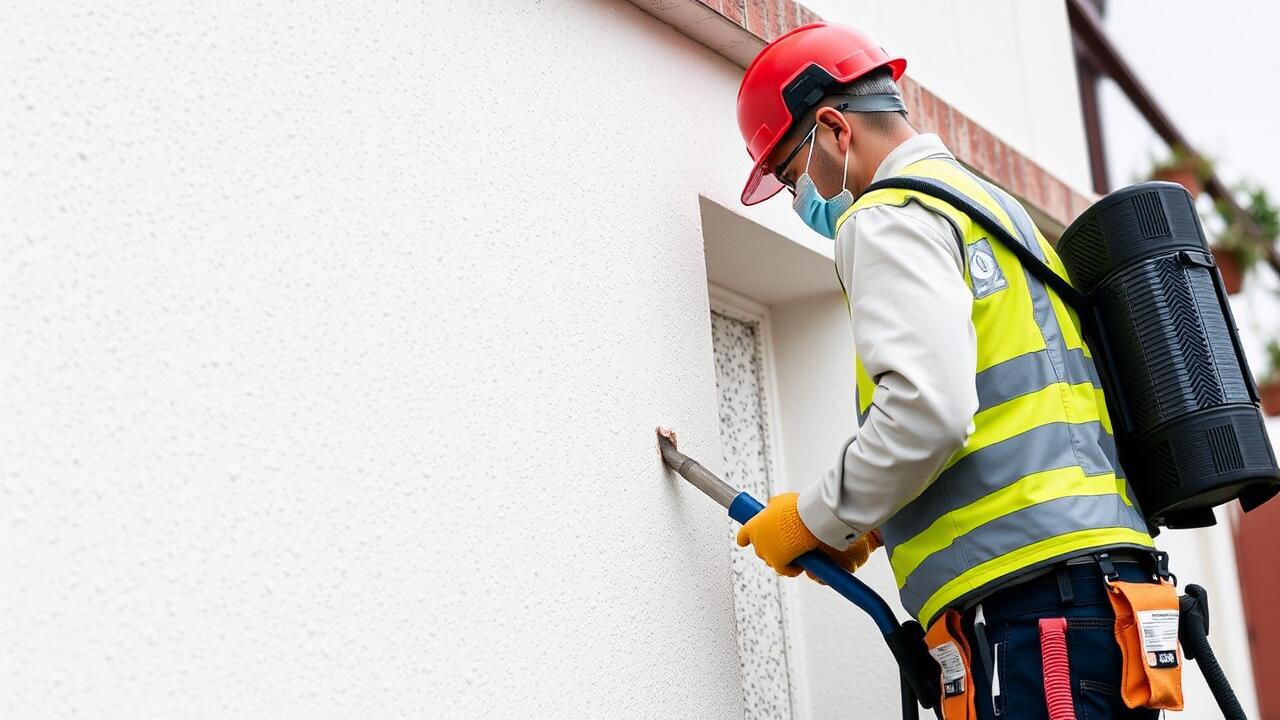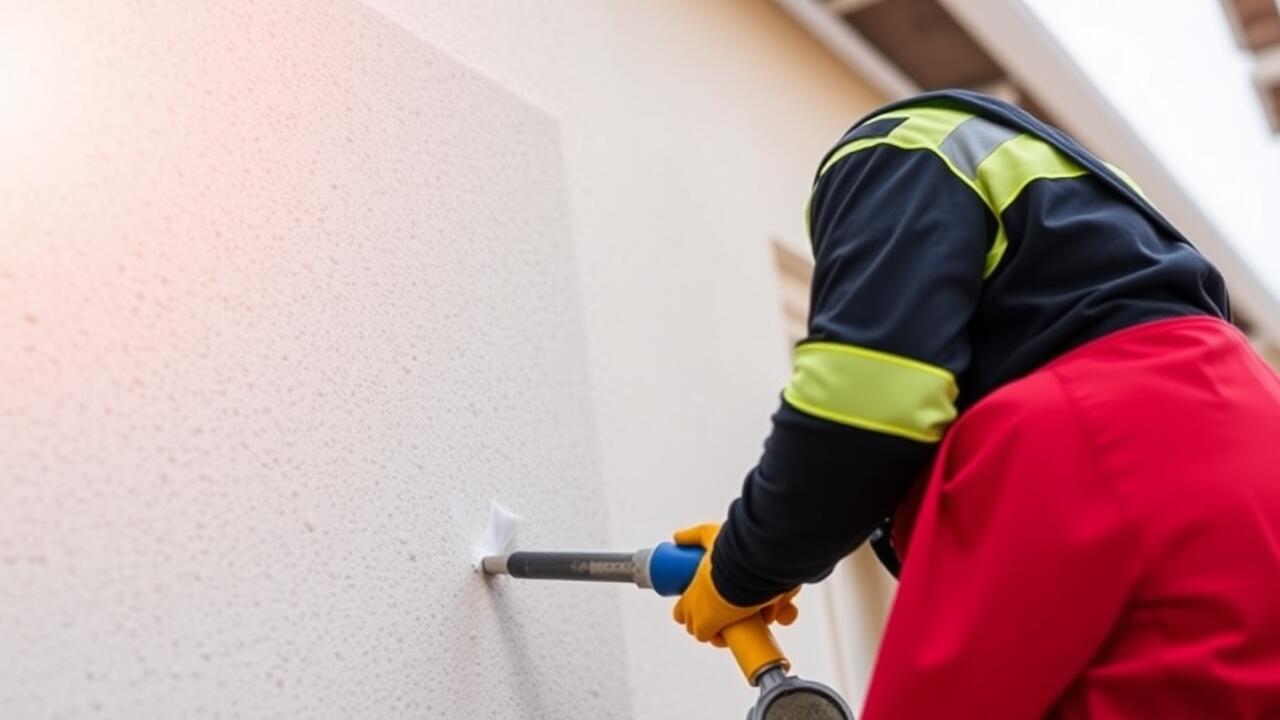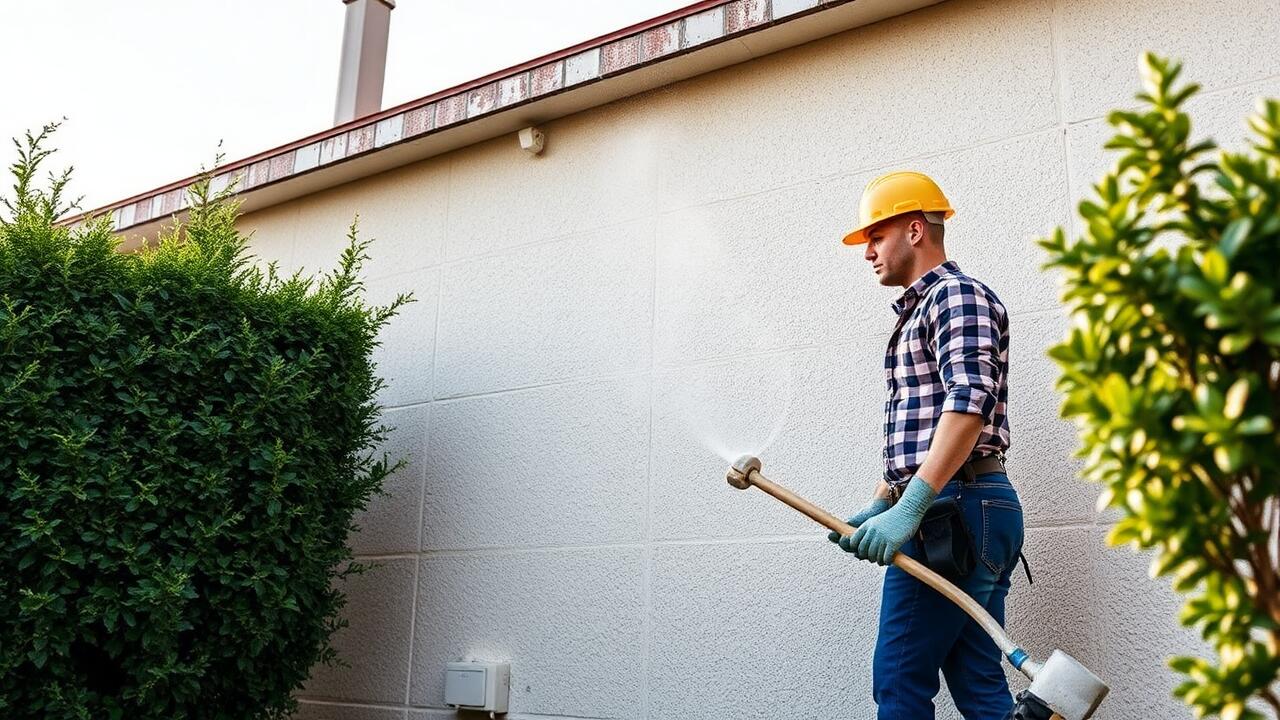
Techniques for Effective Stucco Removal
When approaching stucco removal, starting with the right preparation is crucial. Gather all necessary tools, including a heat gun, scraper, and protective gear. This preparation sets the stage for a smoother process. It’s also beneficial to assess the existing stucco’s condition. Knowing whether it's been applied over wood, concrete, or any other surface guides your technique and ensures a more effective removal.
Using a heat gun can significantly ease the stucco removal process. Aim the heat gun at specific sections of the stucco, allowing the material to soften before scraping. Move systematically to avoid overheating any one area, which can cause damage to the underlying structure. In locations like Stucco Removal Brentwood, Los Angeles, where climates can vary, keep the gun at a moderate setting to prevent cracking or blistering of the substrate. This method not only enhances efficiency but also reduces the risk of complicated repairs afterward.
Tips for Maximizing Your Heat Gun's Efficiency
To maximize the efficiency of your heat gun during stucco removal, it's essential to select the right temperature setting. Higher temperatures can speed up the process, but excessive heat may damage underlying surfaces. Generally, a setting between 800°F to 1000°F is effective for loosening stucco without causing harm to the building structure. Always test a small area first to find the optimal heat level that works for your specific situation.
In addition to proper temperature settings, adopting the right technique is crucial. Move the heat gun in a steady, sweeping motion to avoid concentrating heat in one spot for too long. This approach helps distribute warmth evenly and prevents scorching. For those undertaking stucco removal in Brentwood, Los Angeles, using a putty knife alongside the heat gun can facilitate easier lifting of the stucco as it softens.
Common Mistakes to Avoid
One common mistake during stucco removal is applying heat unevenly across the surface. This can lead to inadequate softening of the stucco and may result in chipping or cracking of the material. In locations like Brentwood, Los Angeles, where stucco homes are prevalent, understanding how to adjust the heat gun's distance and power settings for different areas can make a significant difference in efficiency and results. Taking the time to move slowly and consistently can ensure that the material loosens properly, allowing for easier scraping.
Another pitfall is neglecting to adequately protect surrounding surfaces and areas from heat damage. Heat guns can generate considerable temperatures that might harm nearby materials such as wood or vinyl siding. Before starting a stucco removal project in Brentwood, Los Angeles, it is essential to cover adjacent surfaces with heat-resistant coverings or barriers. Ensuring that the workspace is well-prepared can prevent costly repairs later on and ensure a smoother removal process.
Pitfalls That Can Complicate the Process
Using a heat gun for stucco removal can be effective, but there are several pitfalls that can complicate the process. Overheating the stucco can cause it to bubble or melt, leading to a more difficult and time-consuming removal process. It's essential to maintain a consistent distance between the heat gun and the surface to ensure an even application of heat. For those attempting stucco removal Brentwood, Los Angeles, misjudging the optimal heat setting can lead to damage that might require costly repairs.
Another common issue is failing to adequately prepare the workspace. Dust, debris, and moisture can hinder the effectiveness of the heat gun. Neglecting to remove loose debris can increase the risk of imperfections in the underlying surface. Safety precautions are also critical; ensuring that extra materials are kept away from the heated area can prevent unwanted fires. Proper preparation is key to achieving a smoother stucco removal experience in any environment, especially in residential areas like Brentwood, Los Angeles.
Maintenance of Your Heat Gun
Regular maintenance of your heat gun enhances its longevity and performance. After each use, ensure that you unplug the device and allow it to cool down completely. Inspect the nozzle and remove any accumulated debris to prevent blockages. Cleaning the exterior casing with a damp cloth also helps maintain its condition and prevents dust buildup.
If you're regularly undertaking projects like stucco removal in Brentwood, Los Angeles, consider keeping an extra set of heating elements on hand. This ensures minimal downtime if one becomes damaged during your renovation tasks. Additionally, periodically checking the power cord for wear and tear is essential for safety. A well-maintained heat gun will operate more efficiently and can handle the demands of tougher jobs with ease.
How to Properly Care for Your Tool
Proper maintenance of your heat gun can significantly extend its lifespan and ensure optimal performance during stucco removal projects. It's essential to regularly clean the nozzle and protect it from any debris or dust that can accumulate. After each use, make it a habit to cool down the tool and wipe the exterior with a soft cloth. Keeping the heating element free from obstructions helps maintain even heating and prevents overheating. If you frequently engage in stucco removal Brentwood, Los Angeles, these small maintenance steps will enhance your tool's reliability.
Additionally, always check the power cord for any signs of wear or damage before use. A frayed or damaged cord can pose safety risks and lead to inefficient heating. Storing your heat gun in a dry, cool place helps prevent any moisture-related issues, promoting longevity. By following these care tips, you not only ensure your heat gun operates smoothly but also contribute to a safer and more efficient working environment during your stucco removal tasks.
FAQS
What is the main purpose of using a heat gun for stucco removal?
A heat gun helps to soften the stucco material, making it easier to scrape or peel off the surface without damaging the underlying structure.
Are there specific techniques for using a heat gun effectively during stucco removal?
Yes, techniques include working in small sections, keeping the heat gun moving to avoid scorching the surface, and using the appropriate nozzle for better heat distribution.
What are some common mistakes to avoid when using a heat gun for stucco removal?
Common mistakes include overheating the stucco, failing to wear protective gear, and not preparing the work area adequately, which can lead to accidents or damage.
How can I maximize the efficiency of my heat gun during stucco removal?
You can maximize efficiency by selecting the right temperature setting, using the correct nozzle type, and maintaining a consistent distance between the heat gun and the surface being worked on.
What maintenance is required for my heat gun after using it for stucco removal?
Regular maintenance includes cleaning the nozzle and housing of the heat gun to remove dust and debris, checking the power cord for damage, and ensuring that the air intake is clear of obstructions.
